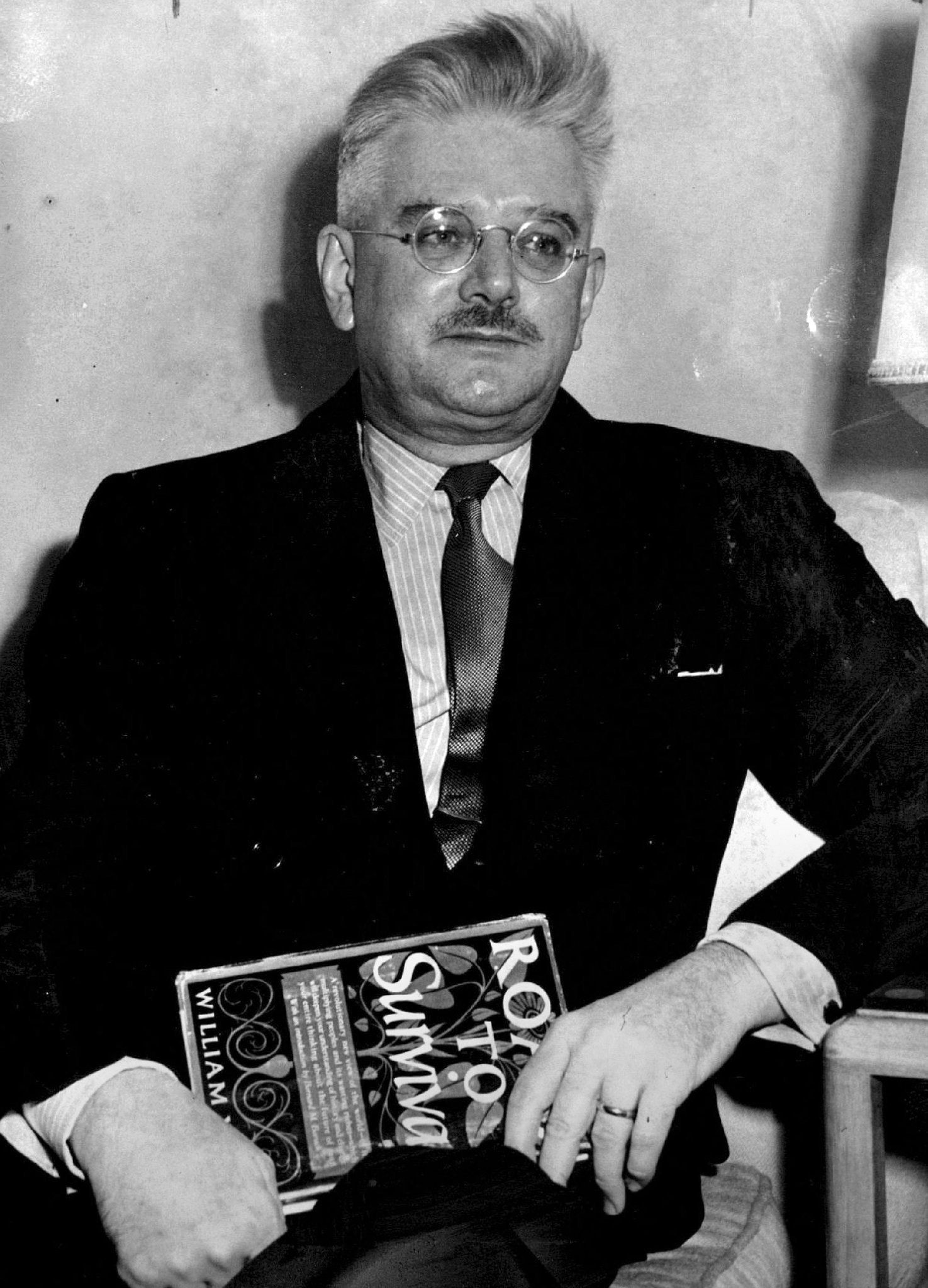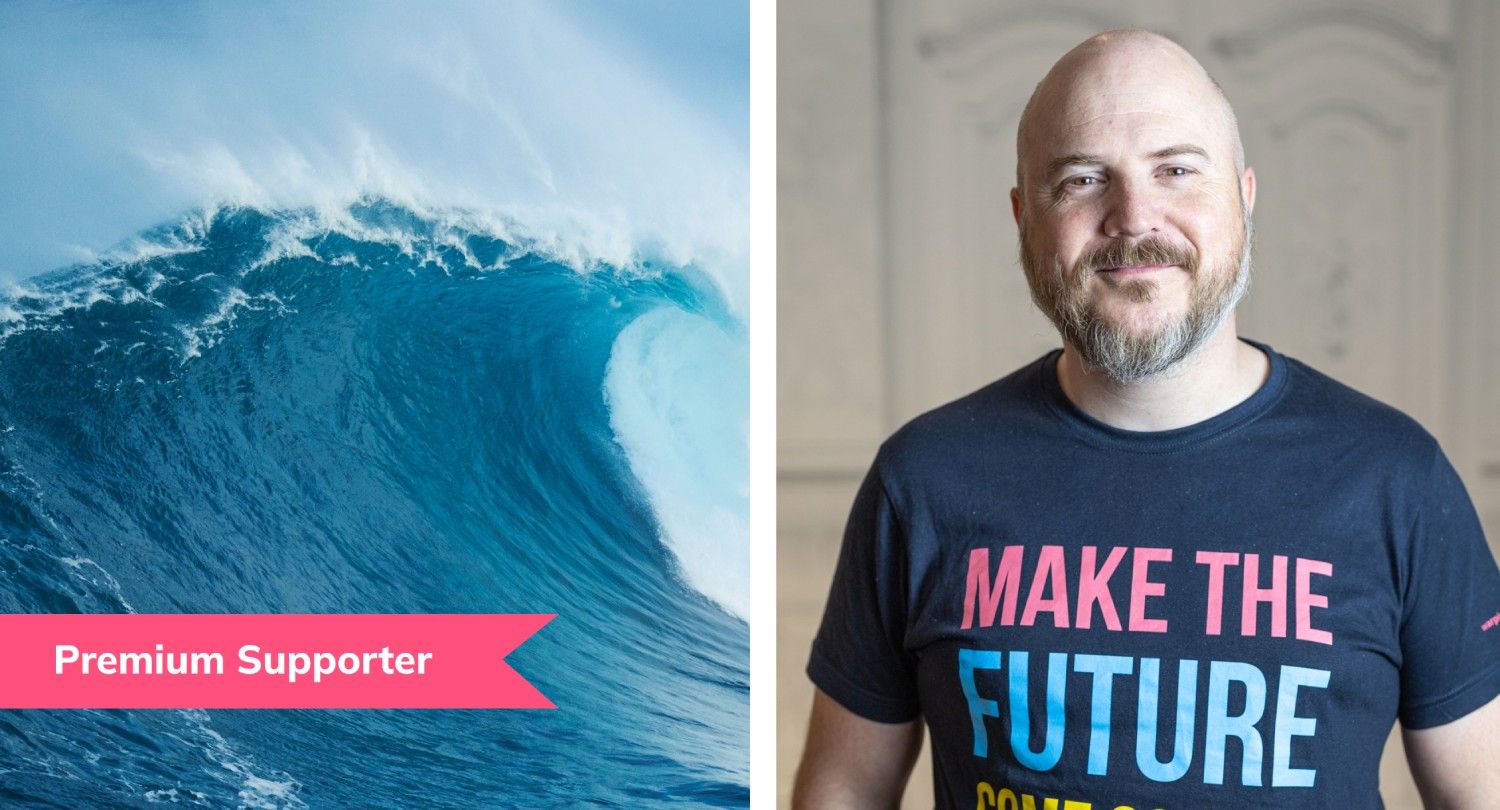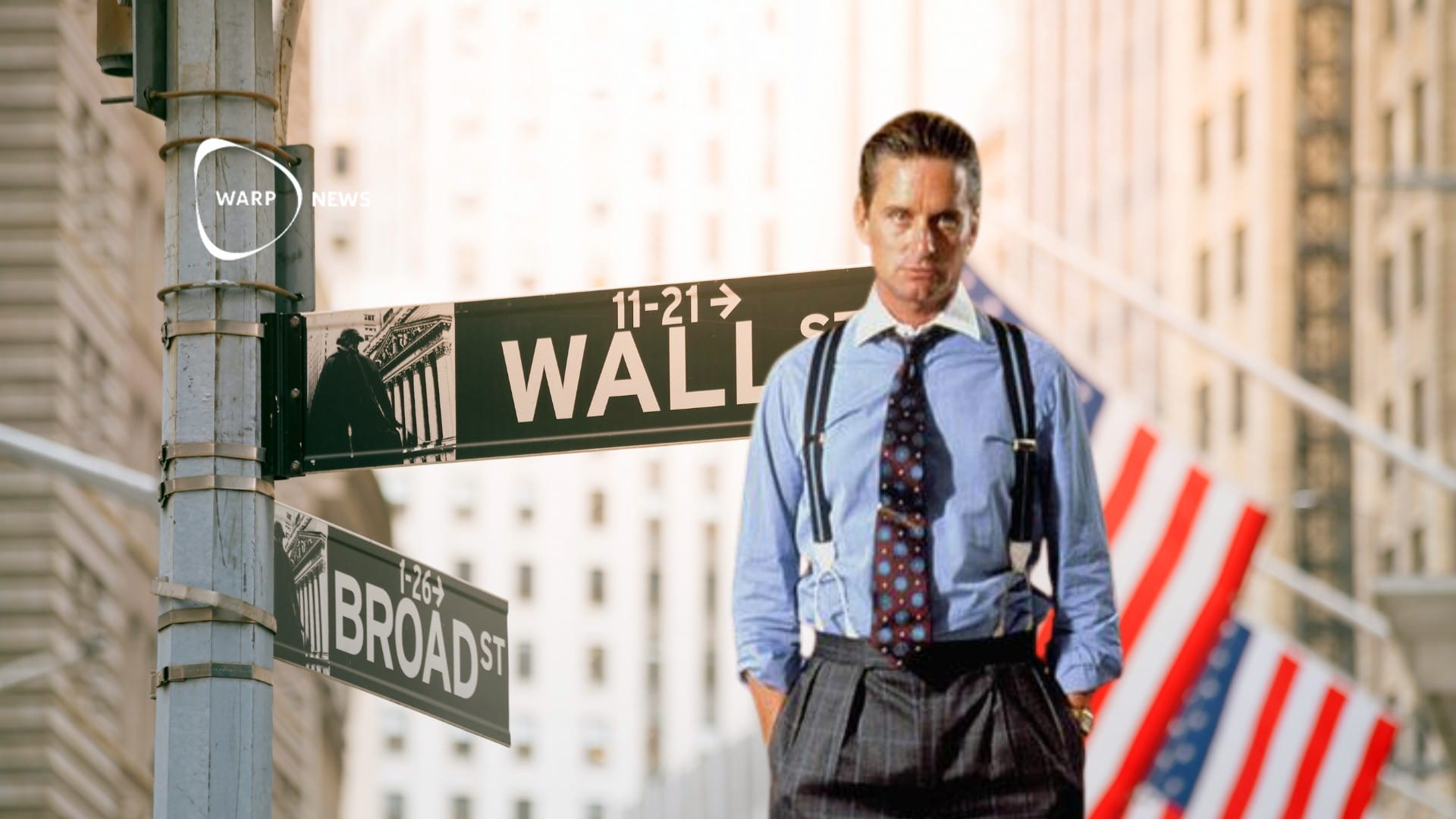
♻️ The teenager who's changing the world and the most important debate of our time
What should we do to solve the problem of climate change? Should we set clear boundaries and push humanity back within them? Or should we evolve so that we can break these boundaries, but without destroying the earth? That is the most important debate of our time.
Share this story!
How should we deal with climate change? In this text, the two paths are symbolized by two historical figures and a teenager.
William Vogt's ideas shaped today's green movement
William Vogt committed suicide in 1968, convinced that he had failed to spread his ideas. Vogt is almost forgotten, but his ideas have had an enormous impact. Had he lived only a few more years, he himself would have experienced it.
In 1968 Paul Erlich's doomsday book The Population Bomb was released, in 1970 Earth Day was born and in 1972 The Limits to Growth was released, whose title captures its content.
When we summarize the 20th century, we can see that Vogt laid the intellectual platform for the century's only new successful ideology: Ecologism.

Vogt's book from 1948, Road to Survival, created the intellectual framework which forms the foundations of a considerable part of our modern environmental movement. Ideas with such a strong impact that we often do not think of them as someone's ideas, but as part of society.
Vogt's main thesis was that each piece of land, each ecosystem, has a unique capacity for how many animals it can feed. In this case, mainly human animals. Carrying capacity, he called it. If there are too many and the carrying capacity is exceeded, they will starve and die, until the number is low enough to be within the carrying capacity.
During Earth Hour, electric lights are turned off and candles are lit in their place. A perfect symbol for Vogt's ideas.
He founded what population researcher Betsy Hartmann calls apocalyptic environmentalism.
Vogt believed that the number of people on earth had already exceeded its carrying capacity in the 1940s. The only solution was to reduce the number. There are in Road to Survival some sentences that really stand out.
Under the heading The Menace of Medicine, he writes:
"Well-meaning public health authorities, completely ignoring the problem of how millions of Latin Americans are to be fed, have helped reduce the death rate."
About Chile:
"One of the greatest national assets in Chile, is its high death rate."
What he means is that for the good of all, the number of people in the world must decrease, and when you help people to survive, you condemn them to a life of misery and a presumed future death from starvation. Whether one thinks it is a good cause or not, the result of a sharp population decline in a short time would be terrible.
That an ecosystem has a carrying capacity is not a strange statement in itself. What distinguishes Vogt is that he believes that this capacity is given by nature. It should not be circumvented or expanded through development. We must instead go back within these limits. Cut back, was his motto.
Developing and improving cereals so that they produce larger harvests is a method of increasing the carrying capacity of a piece of soil. Something William Vogt was opposed to.
Norman Borlaug's work creates the green revolution
In the Mexican countryside in the 1940s and 50s, people were hungry most of the time. Norman Borlaug worked there on behalf of the Rockefeller Foundation. He was sent there to introduce better crops from the United States, which would increase yields and reduce hunger.
It did not work at all. The crops yielded large harvests in the United States, but in Mexico they were attacked by disease, insects, frost and eventually were wiped out. As a result, Borlaug began experimenting with new crops, which he continued to do for the rest of his life.
The experiments were inconsolable work, with tens of thousands of seeds and plants, and during the first few years they had no machines, or animals at all to help them and had to plow by hand, for example.
After 15 years of work, they had developed a plant with a thicker and shorter stem, resistant to diseases, wind and insects, which gave much larger harvests. From 340 kilos per acre to 1100 kilos per acre, an increase of just over 220 percent.
The Green Revolution
An American aid worker called this the Green Revolution and that name has stuck.
Borlaug's work, and he himself, spread to India, Bangladesh and several parts of the world. In 1970, he was awarded the Nobel Peace Prize. Many believe that the green revolution has saved the lives of one billion people.

The Wizard and the Prophet
These two men and their different views of the world are told in Charles C. Mann's book, The Wizard and the Prophet. Borlaug is the magician, Vogt is the prophet.
Borlaug never wrote a manifesto, but he was focused on development, not just crops. According to Mann, Borlaug's view was that we can create a world of wealth and prosperity for all.
At the same time, Vogt is not all wrong (if one can ignore his praise of high death rates). We can not treat the earth however we wish: dump toxic waste, pump the atmosphere full of carbon dioxide, exterminate other species or fish the oceans clean of all life. Some practices need to be abandoned, something which generally happens through progress. That we stop doing something and do something else instead, something that doesn't create the same problem as what preceded it. Solar cells instead of coal power plants. Electric motors instead of internal combustion engines.
A teenager who changes the world
On a holiday to Greece at the age of 16, his eyes opened to the problem of plastics in the sea. What surprised Boyan Slat was that no one made an extensive effort to come to terms with it.
"Why don't we just clean it up?" he thought and used a school project to get to grips with the problem and find a possible solution.
He presented the solution in a TEDx talk: A kind of ship with long arms on the sides that catches the plastics was his suggestion.

It took a while, but six months later the clip began to spread and he used his attention to crowdfund $ 90,000, in order to do an in-depth study. He had more than 100 researchers to help him, who worked pro-bono.
The study became over 500 pages long and in it Slat claims that it would be possible to capture 50 percent of all plastics in the Pacific Ocean in five years. Another crowdfunding campaign was launched, now with the goal of raising enough money to be able to design a system and conduct tests of it.
They raised over two million dollars for the project he named The Ocean Cleanup.
After extensive work, much more capital, and years of hard work, a ship, or System 001 as it is called, pulled out of the port of San Francisco.
In the autumn of 2019, Ocean Cleanup announced that the system now works. It collects plastic as intended.
In parallel, Slat and his team have secretly developed another ship, which will catch the plastic already in the rivers before it reaches the seas. Almost 80 percent of all plastic in the oceans comes from one percent of the rivers. This percentage is about 1000 rivers and that's where Ocean Cleanup intends to deploy The Interceptor.
Technology gives superpowers
Steve Jobs often recounted how as a boy he read an article in Scientific American that compared how much energy different animals used to move. The condor topped the list, it used the least energy in one kilometer. The man was not very impressive, about a third down the list.
"But," said Jobs, "someone in the paper had the insight to test the condor compared to a human on a bicycle. And a man on a bicycle outclassed the condor.”
He called the computer the bicycle of the mind.
It's technological advancements that make it possible for Boyan Slat to clean up the seas and rivers. It was also technical development, in the form of the internet, that gave him the platform to reach out with his message in a TEDx talk.
If we had not had the internet, TED would have continued to be a conference for those who could go and participate in it. All others would be excluded. When Chris Anderson took over the leadership of TED, he tried to get some TV channels to broadcast the speeches. No one wants to see numbers on TV, was the answer. Instead, he posted them on YouTube, and millions turned out to want to see them.
The Internet removes gatekeepers and allows people who are not already inside to test their ideas. TED became a mega-hit on YouTube and with independently organized TED conferences, called TEDx, even more people got the chance to hold TED talks.
Internet, TEDx and crowdfunding gave Boyan Slat the platform he needed to reach out. Thanks to this, it is now possible to clean up a large part of the plastic in the oceans.
Choose path
It would not have happened if we had chosen William Vogt's path. History shows us that doomsday prophets are wrong. What they always miss is the ingenuity of man. We are driven by curiosity and a desire to do differently, to do better. Although the opposite is often said, we actually learn from our mistakes. That's why the world is getting better all the time.
With the industrial revolution, humanity broke the suffering and poverty and began to create prosperity like never before. We also created another problem, climate change. The solution to that problem is not to deny or diminish it. It must be taken very seriously. But the way to solve it is not to stop or reverse humanity's progress.
What we need is faster progress, and we should have started our journey away from the fossil-dependent society much earlier. Now it's unnecessarily urgent.
But that is why it is important not to be intimidated by the doomsday or lose faith in humanity's creative ability.
What we need are magicians. Many magicians.

By becoming a premium supporter, you help in the creation and sharing of fact-based optimistic news all over the world.



